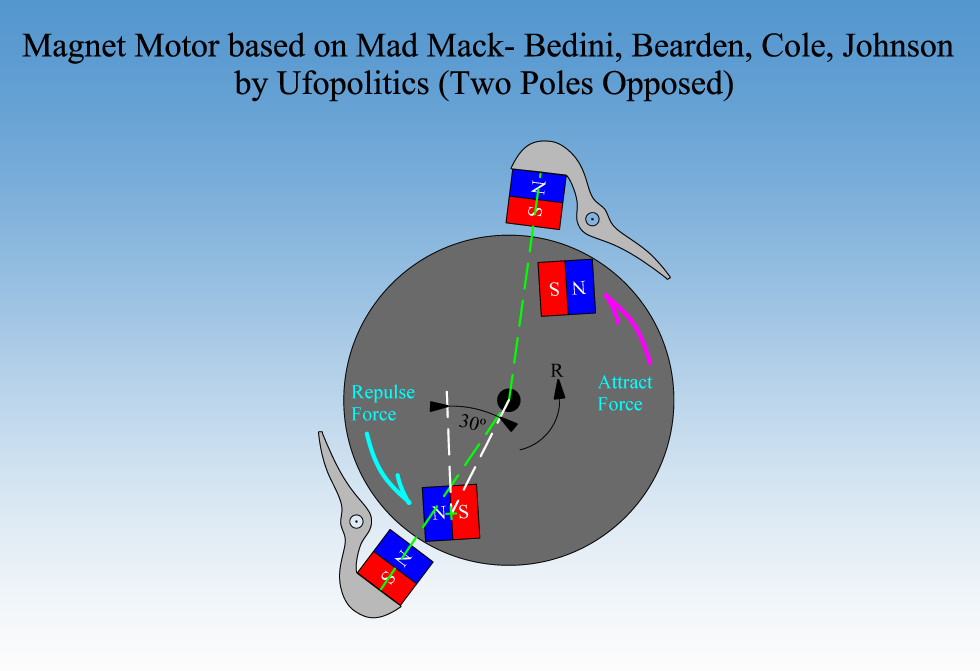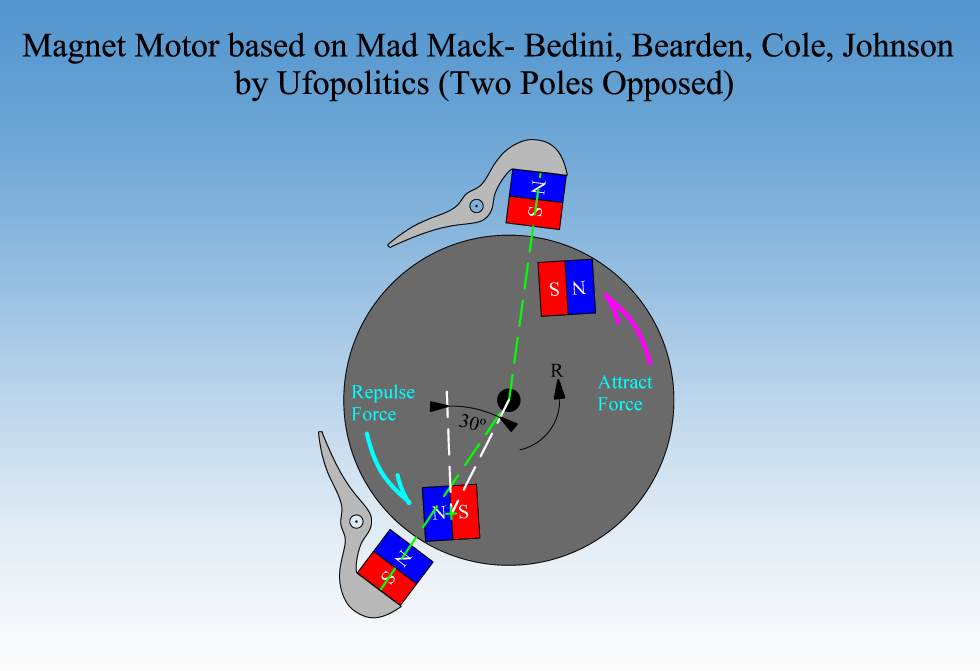Hey Turion
Yes I made my diagram to soon and knew I was getting the cart before
the horse knowing that picking over the Mack quotes should be first and
for most. It's just that I knew I would make a mess of putting his posted
thoughts in chronological order. You did that far better because you
are much more advanced in magnet motor design. I depend on your
help and look for your lead.
I read some of this MACK info again and this prompted me to change
the stator magnet polarity on the attraction side and the rotor polarity
as well. Next it looks like I need to be moving a rotor magnet off center.
Now I have a starting place and will continue to think on this till I have
settled on how this works. Later I'll have a magnet motor I can run
power off of

You are in the lead Sir.
Yes I made my diagram to soon and knew I was getting the cart before
the horse knowing that picking over the Mack quotes should be first and
for most. It's just that I knew I would make a mess of putting his posted
thoughts in chronological order. You did that far better because you
are much more advanced in magnet motor design. I depend on your
help and look for your lead.
I read some of this MACK info again and this prompted me to change
the stator magnet polarity on the attraction side and the rotor polarity
as well. Next it looks like I need to be moving a rotor magnet off center.
Now I have a starting place and will continue to think on this till I have
settled on how this works. Later I'll have a magnet motor I can run
power off of


You are in the lead Sir.






Comment